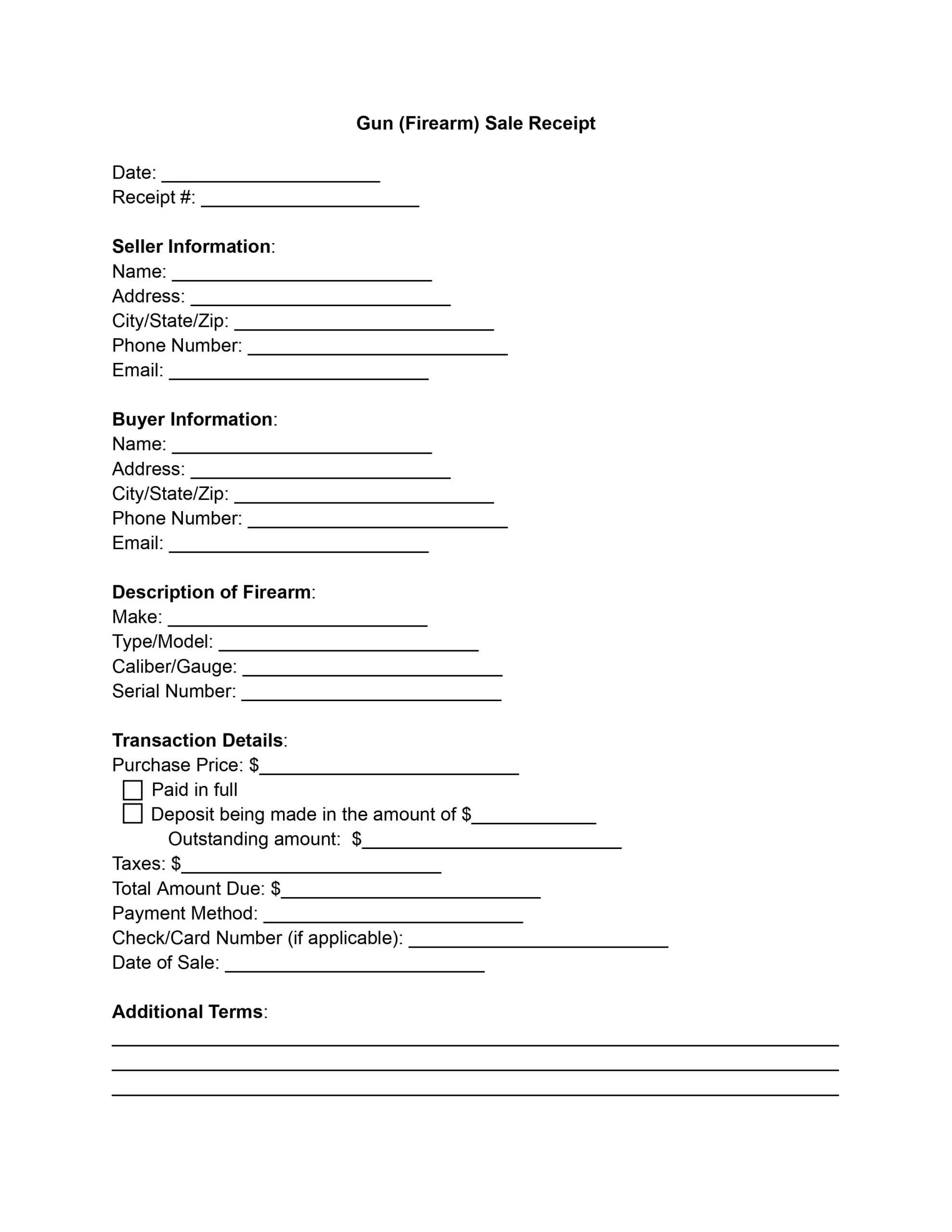The value of a thorough gun sale receipt in private firearm transactions cannot be emphasized enough. This straightforward document is essential for accountability, transparency, and comfort for both the seller and the buyer. A well-written receipt is not merely a record of sale in firearm transactions, where legalities are important. It’s a document that clearly and unequivocally defines the transfer of ownership. A private gun sales receipt also ensures the transaction adheres to all applicable federal, state, and local laws.
Requirements for the Gun Sale Receipts
Filling out a gun receipt demands attention to detail and a thorough understanding of the essential elements that make it comprehensive and compliant with legal standards. This document is a critical component that ensures the legality and security of the firearm transaction. Below is a concise list of the core requirements that must be included in any gun sale receipt to meet these standards effectively:
- Date of Sale. The exact date when the transaction takes place.
- Parties’ Information. Full legal names, addresses, and contact details of both the buyer and seller.
- Firearm Description. A detailed description of the firearm being sold, including its make, model, caliber, and serial number.
- Purchase Price. The agreed sale price is clearly stated.
- Declaration of Legality. Statements from both parties confirm their legal right to buy or sell the firearm in question.
- Signatures. The signatures of both the buyer and the seller validate the document.
Including these elements in the firearm sale receipt makes the transaction more open and straightforward and protects all parties under the law. It demonstrates the seller’s duty to transfer ownership lawfully, and the buyer acknowledges receiving the firearm within the agreed-upon terms.
Filling Out Firearms Sales Receipt Template
Following these procedures assures that the firearm sale receipt is completed accurately, resulting in a clear legal transaction record. This approach protects both parties while ensuring compliance with applicable laws and regulations.
1. Date the Receipt
Enter the current date at the top of the firearms sales receipt template. This marks the official date of the transaction and is crucial for record-keeping and legal purposes.
2. Identify the Parties Involved
Provide the buyer and seller’s full legal names, addresses, and contact information (phone number, email). This step ensures that all parties are clearly identified and can be contacted if necessary.
3. Describe the Firearm
Detail the firearm’s specifications, including make, model, caliber, and serial number. This information is essential for identifying the specific firearm involved in the transaction and verifying its legality.
4. State the Purchase Price
Write the sale price of the firearm. It should be the agreed amount between the buyer and the seller. Including the purchase price is crucial for financial records and future reference.
5. Include Declarations of Legality
Both parties should declare their legal ability to participate in the firearm transaction. It might include statements about the seller’s legal right to sell the firearm and the buyer’s legal right to purchase and possess the gun.
6. Obtain Signatures
Finally, the buyer and seller must sign the gun sale receipt form. Their signatures affirm that all information on the receipt is correct and that both parties accept the conditions of the sale. The signatures serve as a formal recognition of the transaction and its terms.
